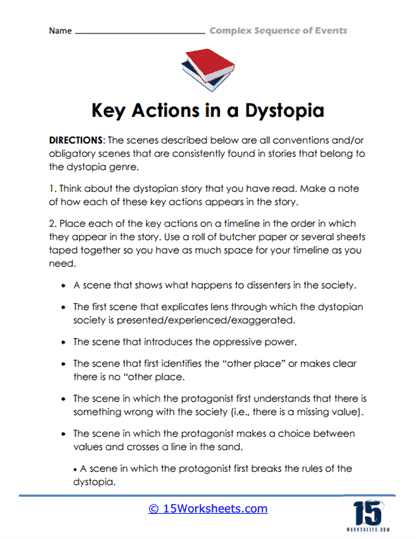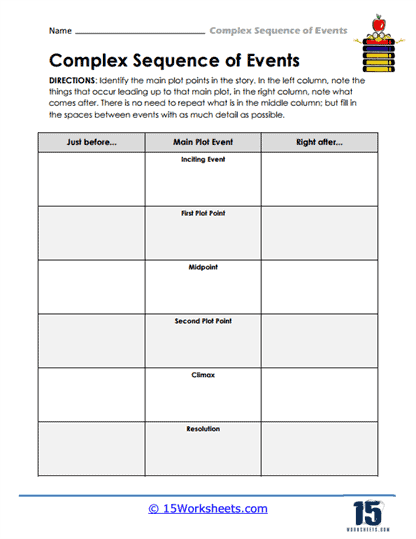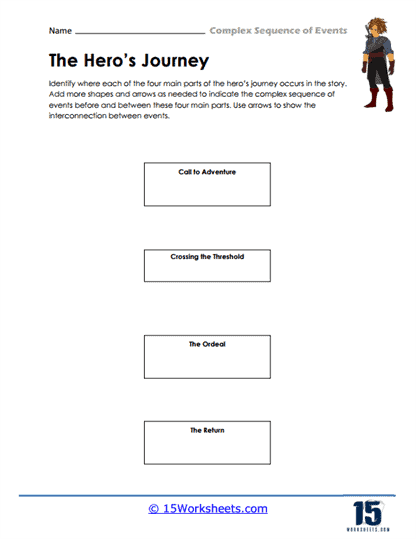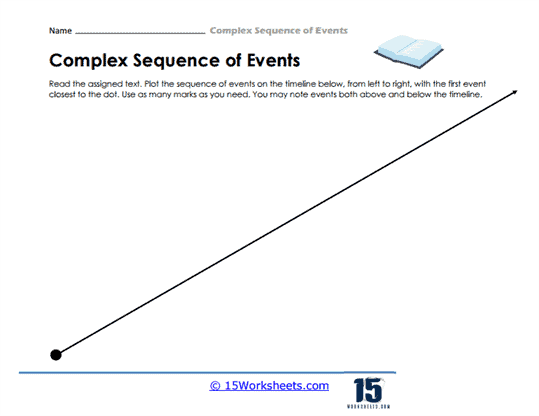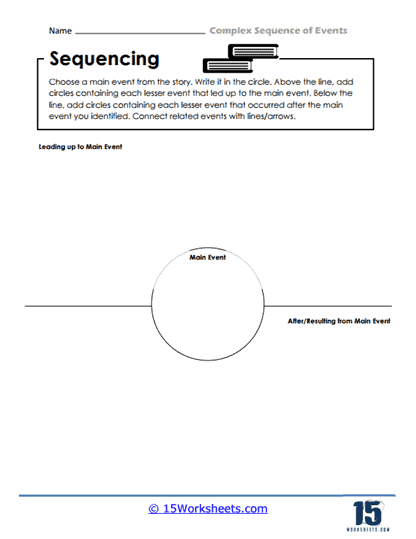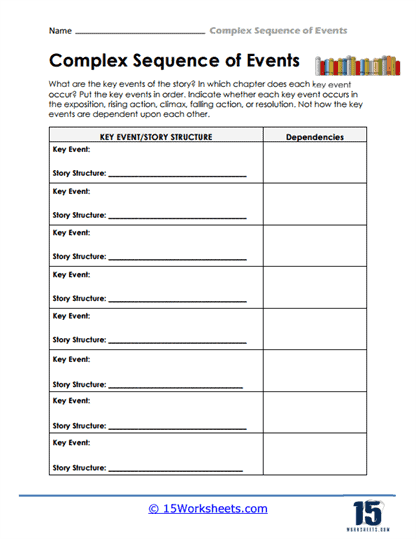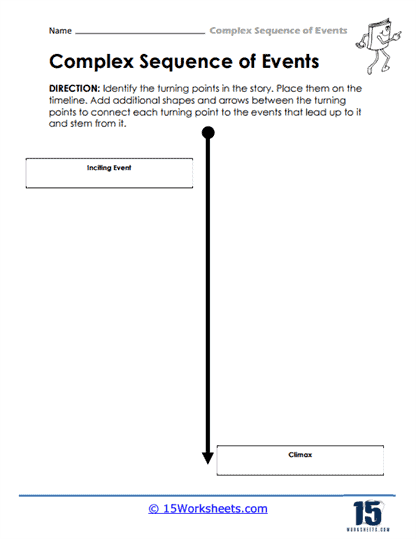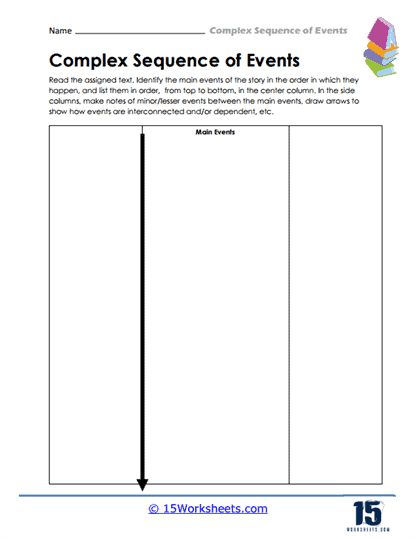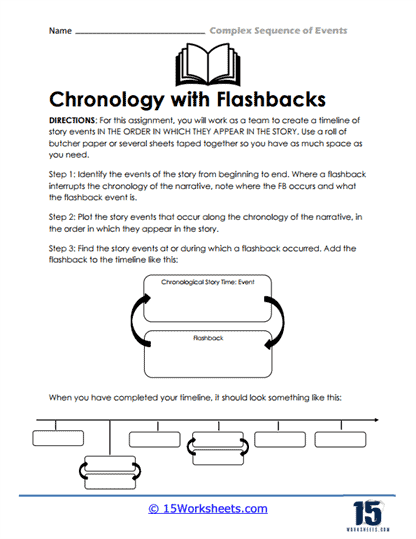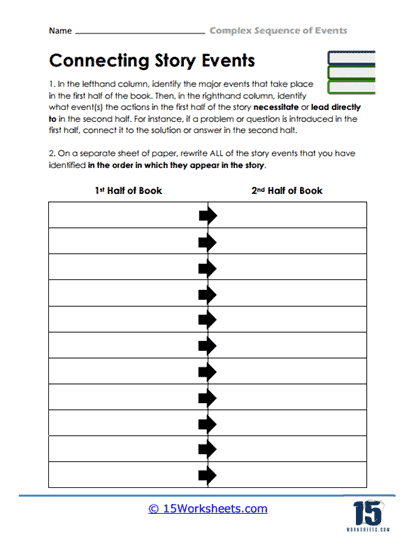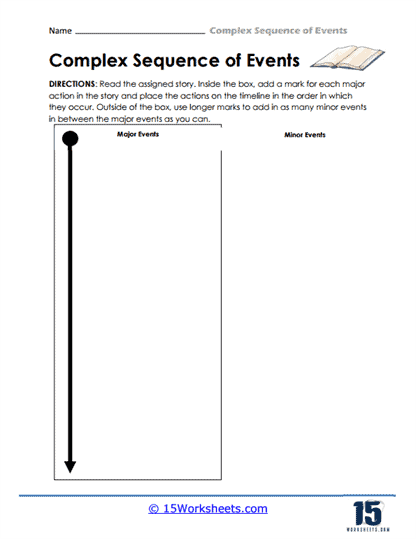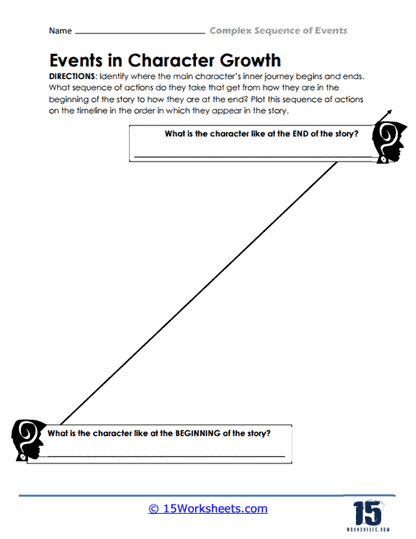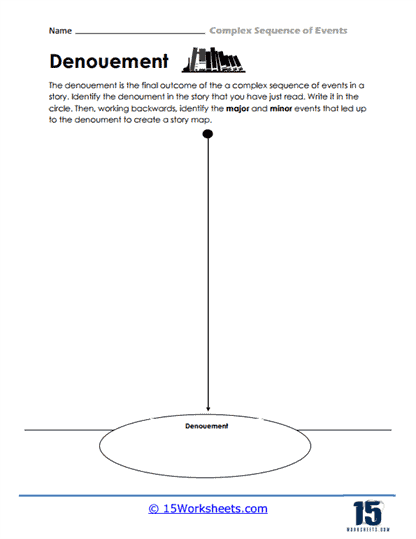Complex Sequence of Events Worksheets
All About These 15 Worksheets
This collection of Complex Sequence of Events worksheets are designed to help students understand and analyze the different parts of a plot in a story, and how they fit together to create a complex sequence of events. These worksheets include questions and activities that encourage students to identify and analyze the different elements of the plot. Through these worksheets, students will:
- Identify the key events in a story;
- Be familiar with all the parts of a plot and their sequence such as the inciting event, first plot point, midpoint, second plot point, climax, and resolution;
- Distinguish minor events from the major events in a story;
- And understand how turning points in a story can be essential not only for the plot development but also for character growth.
By studying complex sequence of events, students develop their critical thinking and analytical skills, as well as their ability to comprehend and interpret written text. They also become more proficient in recognizing the different elements of a plot and understanding how they work together to create a coherent and engaging story. This is a valuable skill that can be applied not only in literary analysis, but in many other areas of life, from interpreting news articles to understanding the structure of persuasive arguments.
How to Breakdown a Complex Sequence of Events in a Story?
To effectively understand and appreciate a story, it is crucial to break it down into parts. By doing this, we can better understand the plot, the characters, and the story’s overall theme. In some cases, breaking down a story can be pretty complex, as there may be many layers to unravel. However, taking it one step at a time and using critical thinking skills makes it possible to grasp even the most intricate tales.
Why is a Complex Sequence of Events Challenging for Readers?
It’s no secret that readers often have trouble keeping track of a complex sequence of events in a story. Whether it’s due to the author’s writing style or the reader’s comprehension level, trying to make sense of what’s happening can be frustrating. Here are a few reasons why a complex sequence of events can be challenging for readers:
- Author May Not Provide Enough Information
The first reason is that a complex sequence of events can be brutal to follow because the author may not provide enough information about each event. In other words, the reader may not have all the puzzle pieces and thus must guess what’s going on. This can be frustrating and can often lead to confusion.
- Illogical Order of Events
Another reason a complex sequence of events can be difficult to follow is that the author may not order the events logically. For example, the author may introduce a character and then have that character do something that doesn’t make sense given what the reader knows about the character. This type of non-linear event sequencing can be confusing and can lead to a feeling of disorientation.
- A lot of Jargon and Unfamiliar Terms
Finally, a complex sequence of events can also be challenging for readers because the author may use technical jargon or unfamiliar terms. This can make understanding what’s going on challenging and lead to confusion.
Tips to Breakdown Complex Sequence of Events
There’s no denying that a complex sequence of events can be confusing for readers. But to create a truly unforgettable story, you must learn how to break down these complex sequences and make them easy to follow. Here are four tips that will help you do just that.
- Create a Timeline of Events
If you’re having trouble keeping track of all the different events in your story, one of the best things you can do is create a timeline. This will help you track what happens when and make it easier to see how all the different events fit together.
- Use Flashbacks Sparingly
While flashbacks can be a great way to provide background information or fill in gaps in the story, they can also be confusing if used too often. If you use flashbacks, make sure they are essential to the story and don’t disrupt the flow of the narrative.
- Use Symbolism and Foreshadowing
Symbolism and foreshadowing can be great tools if you want to hint at what’s to come without giving too much away. Using these devices gives readers just enough information to pique their curiosity without spoiling the story.
- Be Clear and Concise
When it comes to writing a complex sequence of events, clarity is key. Ensure you are being as clear and concise as possible in your writing. If there are parts of the story that are still confusing, try to find a way to make them simpler.

